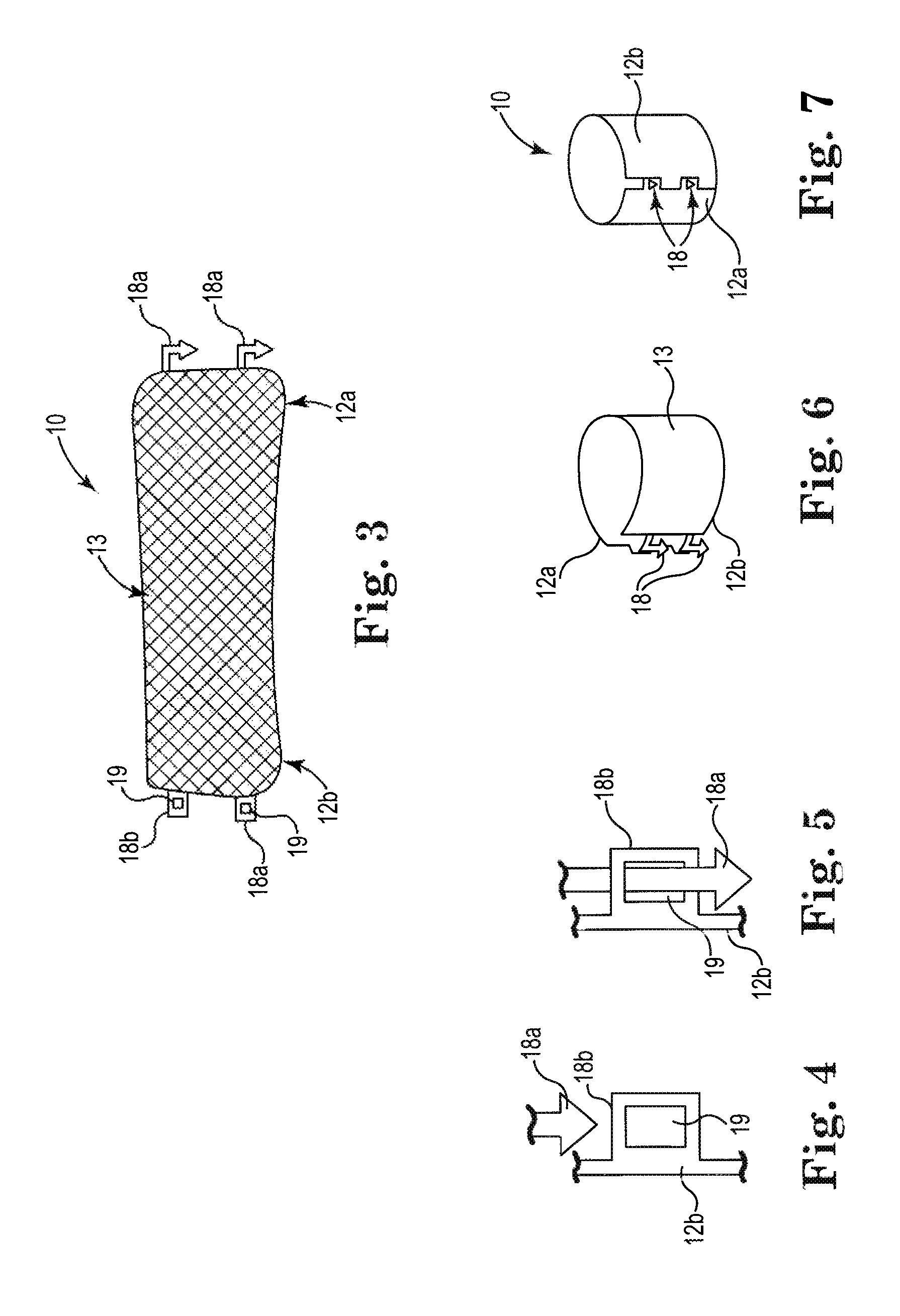Fecal incontinence treatment device and method
a fecal incontinence and treatment device technology, applied in the field of surgical methods and equipment, can solve the problems of frequent bowel dysfunction, unsuitability, and incontinence, and achieve the effects of promoting continence, restoring continence, and restoring continence to the patien
- Summary
- Abstract
- Description
- Claims
- Application Information
AI Technical Summary
Benefits of technology
Problems solved by technology
Method used
Image
Examples
Embodiment Construction
[0024]Referring generally to FIGS. 1-20, various embodiments of implantable devices or systems 10 and methods for treating fecal incontinence are shown.
[0025]The devices 10 can be joined to form a cylindrically shaped member or mesh (e.g., cuff) structure that can include a variable porosity attributes to control the degree of expansion of the anal canal. Pores or openings can be shaped and patterned to allow for resistance to expansion (e.g., hold sphincter closed), yet also allow some expansion or elongation during the passage of material through the sphincter, thereby better mimicking the natural anatomical structure and behavior.
[0026]FIG. 1 one shows typical anatomical structures of the patient, including the rectum R, internal anal sphincter muscles or tissue S, and the anus A.
[0027]In various embodiments, as shown in FIGS. 2-14, the implant device 10 is a generally elongate device in its initial state. The elongate device 10 can include a first end portion 12a and a second en...
PUM
 Login to View More
Login to View More Abstract
Description
Claims
Application Information
 Login to View More
Login to View More - R&D
- Intellectual Property
- Life Sciences
- Materials
- Tech Scout
- Unparalleled Data Quality
- Higher Quality Content
- 60% Fewer Hallucinations
Browse by: Latest US Patents, China's latest patents, Technical Efficacy Thesaurus, Application Domain, Technology Topic, Popular Technical Reports.
© 2025 PatSnap. All rights reserved.Legal|Privacy policy|Modern Slavery Act Transparency Statement|Sitemap|About US| Contact US: help@patsnap.com



